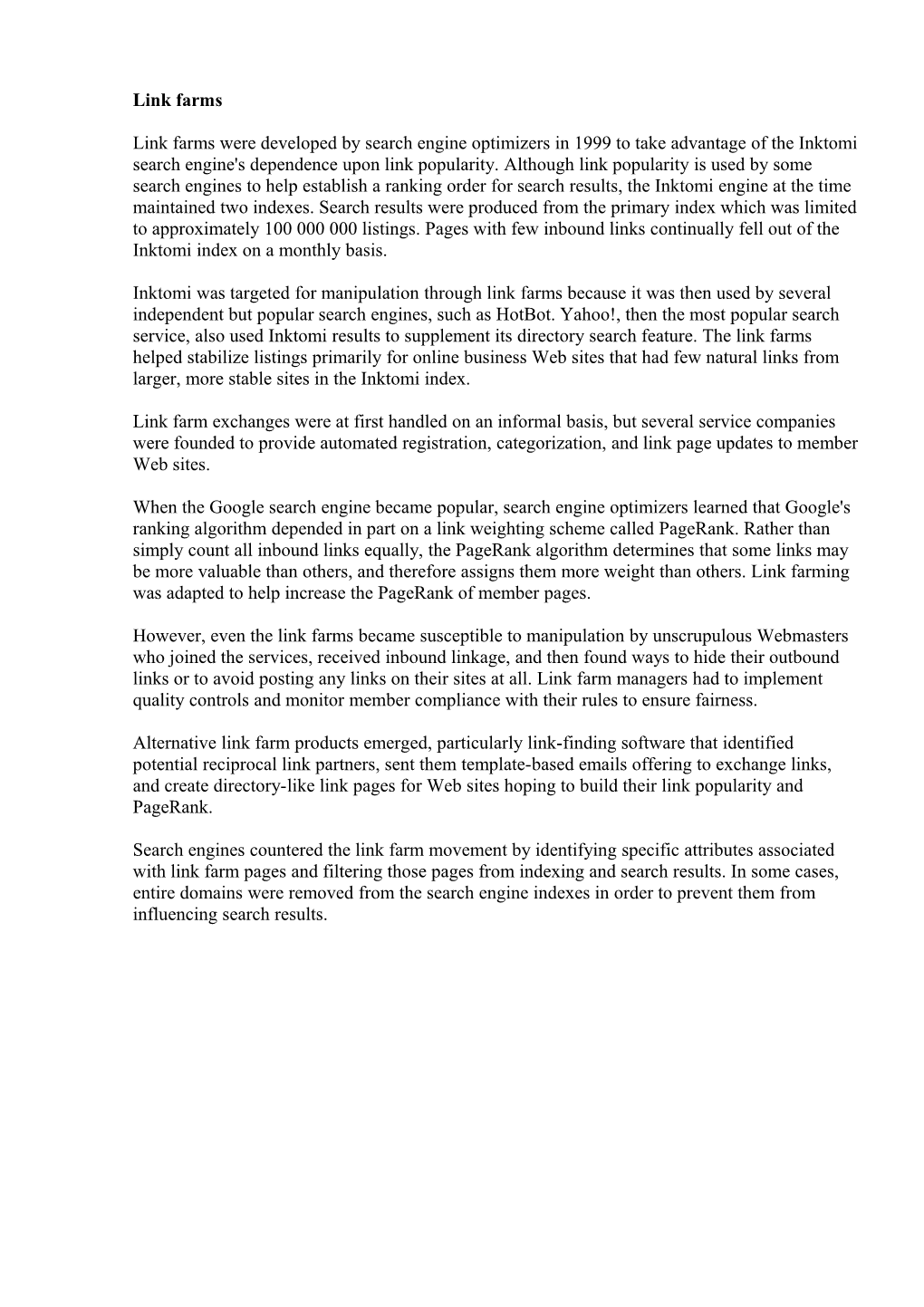Link farms
Link farms were developed by search engine optimizers in 1999 to take advantage of the Inktomi search engine's dependence upon link popularity. Although link popularity is used by some search engines to help establish a ranking order for search results, the Inktomi engine at the time maintained two indexes. Search results were produced from the primary index which was limited to approximately 100 000 000 listings. Pages with few inbound links continually fell out of the Inktomi index on a monthly basis.
Inktomi was targeted for manipulation through link farms because it was then used by several independent but popular search engines, such as HotBot. Yahoo!, then the most popular search service, also used Inktomi results to supplement its directory search feature. The link farms helped stabilize listings primarily for online business Web sites that had few natural links from larger, more stable sites in the Inktomi index.
Link farm exchanges were at first handled on an informal basis, but several service companies were founded to provide automated registration, categorization, and link page updates to member Web sites.
When the Google search engine became popular, search engine optimizers learned that Google's ranking algorithm depended in part on a link weighting scheme called PageRank. Rather than simply count all inbound links equally, the PageRank algorithm determines that some links may be more valuable than others, and therefore assigns them more weight than others. Link farming was adapted to help increase the PageRank of member pages.
However, even the link farms became susceptible to manipulation by unscrupulous Webmasters who joined the services, received inbound linkage, and then found ways to hide their outbound links or to avoid posting any links on their sites at all. Link farm managers had to implement quality controls and monitor member compliance with their rules to ensure fairness.
Alternative link farm products emerged, particularly link-finding software that identified potential reciprocal link partners, sent them template-based emails offering to exchange links, and create directory-like link pages for Web sites hoping to build their link popularity and PageRank.
Search engines countered the link farm movement by identifying specific attributes associated with link farm pages and filtering those pages from indexing and search results. In some cases, entire domains were removed from the search engine indexes in order to prevent them from influencing search results.
